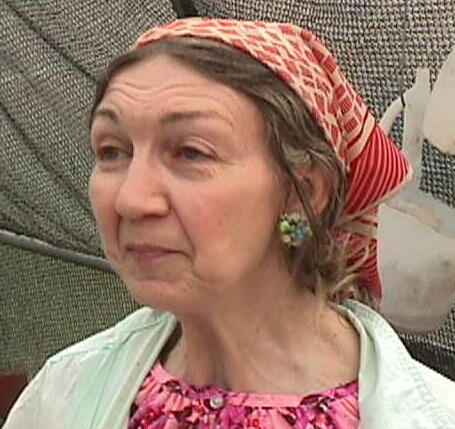Plans for a Winter Garden
Linda Knox
Adams County Master Gardener
 What makes a "winter" garden special? Or perhaps the question should be: what makes an ordinary garden a special winter garden? Quite simply, the
fact that a garden appears at a time when everything else in the winter landscape is dull, plain and brown is outstanding alone.
What makes a "winter" garden special? Or perhaps the question should be: what makes an ordinary garden a special winter garden? Quite simply, the
fact that a garden appears at a time when everything else in the winter landscape is dull, plain and brown is outstanding alone.
Starting from the horizontal aspect, you may decide to build walkways or edges at various sections of the yard. Remember that pieces of walks or paths create interest if set at angles or if irregular stone shapes are used. A curved path
approaching an entrance extends its own invitation to the visitor approaching your front door. The path may be stone, brick, concrete, paving blocks or gravel; even a perfectly flat front or side yard benefits by the delineation of planting areas. A small statue tucked into
a corner or between beds at the edge of the garden adds interest to the design, and generally, small spaces appear larger if plants around the edges surround a wider lawn.
Paths and raised areas lend a sense of movement. You will not find many moving signs of life unless it is a rabbit scurrying or a squirrel recovering his hidden stash of food that only he remembers. Most welcome to gardeners are the colorful
birds (cardinals, jays, finches, woodpeckers) that are easily drawn to feeding stations strategically placed around the yard. An all-winter feeding station supplies another focal point whether at the edge of the landscape or in a protected corner - feathered friends
appreciate your kindness at any spot.
In spite of the temptation to choose showy plants such as ornamental cabbage that look great for a short time on display, you should consider that protection is necessary and the onset of severe weather will probably end their usefulness. To
avoid this problem, choose plants that will continue through the winter and into coming years. In other words, consider plants recommended for zones 6-7 which safely grow in our locale. Planting of carefully selected trees may be the next step. Remember that the important
thing for winter will be the overall shape and size of the tree when mature for the space allowed, whether evergreen or deciduous meaning that the limbs will be bare when leaves have fallen. Just a few small trees and shrubs that provide color for winter interest include
the ever-popular holly, red twig dogwood, winterberry and nandina (or false bamboo).
Among the ground covers that spread a green carpet across ordinary dull, winter soil is English ivy. It requires little care and does well in sun or shade. Since ivy will climb, use it away from walls. It can color embankments or sections
surrounding lampposts, corners set off by rails or fencing, etc.
Another dependable, multi-seasonal ground cover is, 'Ajuga' or bugleweed. It spreads by stolens that produce dense mats of plants. Being a member of the mint family, it can get out of bound but may easily be lifted in spring or fall to new
sites. It fills spaces around shade trees, especially where a lawn refused to start, and flowers throughout the summer growing season. Choices are 'Alba' (white flowers), 'Burgundy Glow' (variegated foliage with blue flowers), and 'Bronze Beauty' (bronze foliage and blue
flowers). Periwinkle (vinca minor) stays dark green year-round with delicate leaves on long trailing stems which root at the nodes as it runs across the ground. It likes full or partial shade, which makes a nice under planting for spring bulbs, as it reaches only six inches
in height. Periwinkle may be divided at any time - plant rooted cuttings in spring or several weeks before the ground freezes.
Ground covers that prefer sun and are tolerant to dry situations include many varieties of juniper. Plant these evergreens in open areas, on slopes or banks. Choices include 'Bar Harbor' (spreads 6-8 feet and reaches 1 foot in height), 'Plumosa'
(spreads to 10 feet, reaches 18 inches to 2 feet in height and changes to a purplish color in winter), 'Blue Chip' (grows 8-10 inches high and keeps its bluish tone) or 'Wiltoni' or 'Blue Rug'(grows only 6 inches high and has silver-blue foliage).
No matter the season, in What Gardens Mean, University of Chicago Press, 1998, Stephanie Ross reminds us "in appreciating a Gothic cathedral or a Palladian villa, we notice its relation to its site, the statements it makes, and the emotions
it evokes". All this is true of our approach to gardens as well." Happy planning for next year's winter garden!
Read other winter related gardening articles
Read other fall related gardening articles